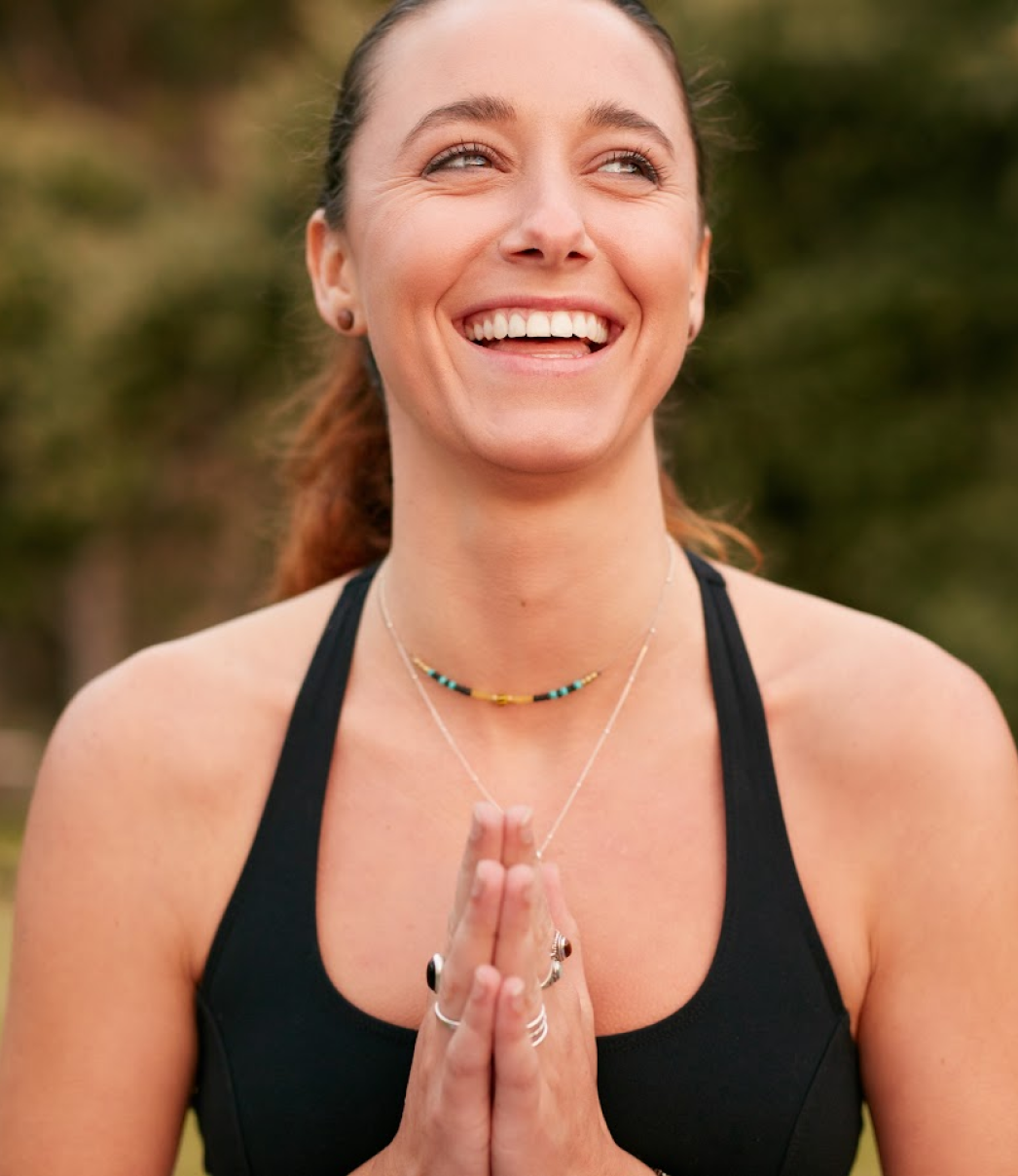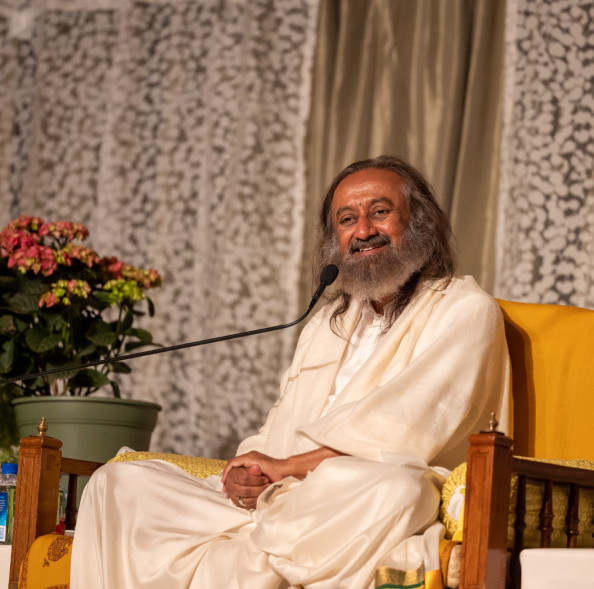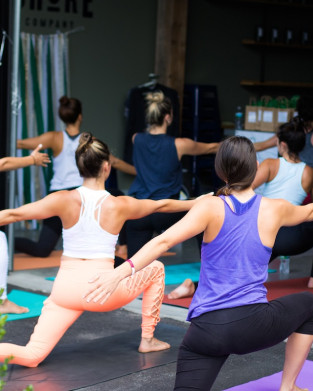The Art of Living Difference

44 years
of service to society

40,000+ centers
worldwide with weekly follow up sessions

180+ countries
where we make a difference

800M+ lives
touched through our courses and events
Our Flagship Courses
The Happiness
program
- Create lasting happiness 500M lives changed
- Evidence-based breathing techniques - practiced for over 42 years
- Proven techniques globally - over 10,000 centres
The Art of Meditation Sahaj Samadhi Meditation
Children &
Youth classes
Yoga classes
Featured in
Free Introduction to the Happiness Program
- Join a Free 75min Introductory Session
- Learn evidence-based breathing techniques to calm the mind
- Experience a guided relaxation & learn about the nature of the mind


Powerful programs brought to you by Gurudev Sri Sri Ravi Shankar.
Gurudev Sri Sri Ravi Shankar is a global humanitarian, spiritual leader, and peace envoy, who has been teaching breath-based meditation techniques for health and well-being for more than 40 years. His approach blends ancient Vedic wisdom with modern sensibility for a new paradigm of leadership, living a stress-free life and creating a violence-free society.
Through Gurudev’s programs, millions of people worldwide have found peace and resilience in the face of adversity, learning not only how to excel in their own lives, but also how to become powerful agents for social change.

Additional courses
Explore Art of Living’s revolutionary range of courses to help master your mind and develop into your personality.
Sri Sri Yoga
- Authentic yoga practice that deeply benefits the mind.
- Experienced & certified instructors to guide you through evey step of the way.
Kids & Youth Courses
- Build confidence, develop a well-rounded personality, and nurture human values within your child.
- An engaging life-skill program that helps establish their values.
Intuition Process
- Revolutionary two-day program for children and teenagers from 5 years up to 18 years of age.
- Learn Art of Living’s proven techniques on brain activation & meditation.
Happy Experiences
Looking for advanced techniques?
Advanced Courses
*open to people who have completed the Happiness Program
Classes Across Australia
Art of Living hosts meditation and yoga classes across Australia, allowing people to connect with
like-minded individuals to understand the nature of the mind and find peace.
Questions?
The average in-person meditation class in Sydney can range from $20-$150, averaging around $55 - $60 per class. The cost of meditation classes in Sydney depends on the type of meditation, the experience, whether you choose a group class or private consultation and the duration of the meditation.
The cost of one-on-one meditation classes in Sydney range from $75–$200 per hour on average.
There are many places to learn meditation in the world, but Art Of Living truly is one of a kind. Art of Living provides certified Yoga Alliance and TM Registered Teachers with over 40+ Years of Teaching across 156 Countries. Art of Living has been changing 450+ Million lives with meditation worldwide. Art of living offers easy, natural, Guided meditation & Yoga for all levels, scientifically tested and proven to produce positive results to rest deeply, release stress and get your balance back.
You can start meditation for free by meditating at home and implementing meditation into your daily routine. You can begin to meditate every day by creating a home meditation space. Choose a quiet place, switch off distractions and prepare a special airy area to meditate. You should include chairs, cushions, blankets and shawls. Make sure your area is uncluttered and add a clean yoga mat. As a beginner, we recommend you start with 5 – 10-minute meditations and then gradually build up to 20 minutes or even longer (not required). As a general guideline, 20 minutes is an ideal time to meditate. However, if you feel particularly stressed and wish to create calmness or increase concentration, we recommend you work for up to 30 minutes, including implementing and learning breathing techniques such as the one breath-based meditation called the SKY Breath Meditation technique and Modern Mantra Meditation. Try to create a schedule and meditate at the same time every day. A daily routine helps remove any hindrances, helps you start finding preferences and eliminate any questions on if you have time or what time is best. At first, try out different times, note down what works for you and then STICK TO IT. Or try, at least. There is great power in habits. It allows you to schedule, plan and reserve a time for you to allow yourself to focus on yourself. We also recommend you read our article A beginners guide to meditation or 8 tips to get started with Meditation and watch our video 10 Minute Guided Meditation for Beginners to help you discover some tricks and tips to start you on the way.
How long you meditation depends on your preferences, life circumstances, and the time available. You can begin with 5-10 minutes and then gradually build up to 20 minutes or even longer (not required). As a general guideline, 20 minutes is an ideal length of time to meditate.
Choose and reserve a time that suits your household and schedule. If you know there is a particular time when the kids have gone to school, you have some time to yourself or know that the house is quiet, then use that time to meditate. Meditation is your time to relax and be present with yourself, away from distractions, disruptions and the outside world. Free yourself from distractions and allow yourself the time you deserve. Consider selecting a quiet, peaceful location where you feel comfortable. The stillness around you can help you find stillness within. Pick the quietest corner in the house and switch off any distractions. If you are new to meditation and using guided meditation, music is fine. But sometimes music can act as a distraction and hindrance than a help. Once you are a pro and have established yourself in your meditation practice, you may not need any music. Here is what our experts share about the pros and cons of using music while meditating.
There is nothing more distracting that Facebook notifications, Instagram selfie updates and the chimes of modern technology threatening to ruin a peaceful, calm and purposeful meditation. As important as relationships are, during meditation it's time to switch off and switch on!
So put them phones on silent, unplug your home phone and take some time to yourself. Your online funny dog videos will be there for after!
We recommend you meditate in silence free from distraction to let your mind rest. Consider selecting a location that is quiet and peaceful, somewhere you feel comfortable. The silence and stillness around you can help you find stillness within. Pick the quietest corner in the house and switch off any distraction. If you are new to meditation and using guided meditation, music is fine. But sometimes music can act as a distraction and hindrance than a help. Once you are a pro and have established yourself in your meditation practice, you may not need any music. Here is what our experts share about the pros and cons of using music while meditating
There are many pros and cons to meditating indoors and outdoors and which you choose depends on your preference. Outdoor meditation is great to get some fresh air and connect with nature, but it can be distracting with outside noise and enhances your receptivity and mental awareness of your surroundings. Outdoor meditation is great for silence but depends on if your household is free from distractions and can be hard to concentrate and get started, so it requires more willpower than outdoor meditation.
The time you choose to meditation varies from each person. Realistically, the modern world with all its task, schedules and appointments requires a balance that suits your lifestyle and life.
Most people choose to meditate in the morning, rested for the day. Others prefer at night ready for sleep and relaxation. A modern lifestyle requires a modern meditation schedule
You may find that you experiment and try different times, lighting and locations that suit your lifestyle, your schedule and your preference.
This is YOUR journey; therefore, you need to find what works for you. There is no correct answer, there is no perfect time, you do what is right for you.
With that in mind, there are certain times of day that you may find it easier or preferable to meditate:
- Rise with Sunrise:
Many meditators find Sunrise an effective time to meditate. If you are an early riser, this time may suit you perfectly to start your day off and set the tone for the rest of your day. At Sunrise, the outside world is quiet, perfect for quietening the mind and an excellent time for reflection.
- Sunrise, Sunset:
The natural transition from day to night and reversed is also an ideal time for meditation and reflection and is truly a perfect way to start or end the day.
- A quiet time to relax and be present:
Choose and reserve a time that suits your household and schedule. For example, if you know there is a particular time when the kids have gone to school, you have some time to yourself, or you know that the house is quiet, then use that time to meditate. Meditation is your time to relax and be present with yourself, away from distractions, disruptions and the outside world. Free yourself from distractions and allow yourself the time you deserve.
- Try to create a schedule and meditate the same time every day:
A daily routine helps consequence any hinderances, start finding preferences and eliminates any questions on if you have time or what time is best. At first, try out different times, note down what works for you and then STICK TO IT. Or try at least.
There is a great power in habits, it allows for you to schedule, to plan and to reserve a time for you to allow yourself to focus on you.
Yes, it is okay to meditate in bed, you can meditate where you feel comfortable, but we do not recommend meditating in bed or lying down. Meditation is a form of conscious relaxation where the mind is alert yet relaxed. When lying down, the mind tends to fall asleep and may cause you to lose your alertness.
As beginners, we recommend starting with 5 – 10-minute meditations and then gradually building up to 20 minutes or even longer (not required). As a general guideline, 20 minutes is an ideal time to meditate. However, if you feel particularly stressed and wish to create calmness or increase concentration, we recommend you work for up to 30 minutes, including implementing and learning breathing techniques such as the one breath-based meditation called the SKY Breath Meditation technique and Modern Mantra Meditation.
We also recommend you read our article A beginners guide to meditation or 8 tips to get started with Meditation and watch our video 10 Minute Guided Meditation for Beginners to help you discover tricks and tips to start you on the way.
Some say they feel the benefits of meditation instantly and will notice they can sleep deeply, feel less stressed and get their balance back after a few sessions. However, meditation is a lifelong journey. Take it session by session, day by day. And don’t expect instant results. Meditation practice, breathing and relaxation techniques have been scientifically backed to release accumulated stress, reduce anger and increase happiness and fulfilment for the mind, body and soul. There are also evidence-based studies that link mediation to your Alpha Brain Waves and help improve brain function. Meditation has also been known to help the sensory organs become more attuned, for example, hearing finer notes within a piece of music or better concentration.
You can start meditating every day by creating a Home Meditation Space. Choose a quiet place, switch off distractions and prepare a special airy area to meditate. You should include chairs, cushions, blankets and shawls, make sure your area is uncluttered and add a clean yoga mat. As beginners, we recommend you start with 5 – 10-minute meditations and then gradually build up to 20 minutes or even longer (not required). As a general guideline, 20 minutes is an ideal time to meditate. However, if you feel particularly stressed and wish to create calmness or increase concentration, we recommend you work for up to 30 minutes, including implementing and learning breathing techniques such as the one breath-based meditation called the SKY Breath Meditation technique and Modern Mantra Meditation. Try to create a schedule and meditate at the same time every day. A daily routine helps consequence any hindrances, start finding preferences and eliminate any questions on if you have time or what time is best. At first, try out different times, note down what works for you and then STICK TO IT. Or try, at least. There is great power in habits; it allows you to schedule, plan and reserve a time for you to allow yourself to focus on yourself. We also recommend you read our article A beginners guide to meditation and watch our video, 10 Minute Guided Meditation for Beginners.
If you are new to meditation and using guided meditation, music is fine. But sometimes music can act as a distraction and hindrance than a help. Once you are a pro and have established yourself in your meditation practice, you may not need any music. Here is what our experts share about the pros and cons of using music while meditating
Yes, in fact meditating before sleep is a perfect time to meditate, depending on your schedule. You may find meditation before sleeping helps you unwind and prepare you for bed. Meditation have been scientifically proven to help aid sleep. Meditating before sleep can help rest your mind and prepare it for sleep. You get a deeper rest from a short 20-minute meditation than sleep and is equal to four hours of undisturbed sleep. Research says, those who meditate can manage to stay productive by sleeping for just five hours.
Meditating before sleep and closing your eyes will help quieten the mind and prepare you for sleep, prevent the outside problems from keeping you awake and hindering your journey inwards, allowing you to bring your attention within and fully rest before and after meditation.
This takes practice, and often closing your eyes can cause your mind to race, therefore focusing on an object and keeping your mind still, then closing your eyes gradually will help gradually close the flow from state of alertness to state of rest. After this you may wish to use this state of rest to fall to sleep naturally.
Meditating and nostril breathing can help you drift off to sleep by quietening the mind. Just like preparing for sleep, your breath will get lighter and smoother during meditation. Breathing exercises like alternate nostril breathing and light and even breath can help quiet the mind, prepare you for sleep and bring the mind to an ever-quieter place. Try reading the article Sleep Better With Ayurveda.
Physically what you see depends on if you have your eyes open or closed, but when you meditated the environment should not matter, to truly mediate you separate from your environment and all that is around you.
Meditation does not require you to concentrate on what you see. Therefore, it is important not to concentrate or try to force ‘what you are seeing’ or ‘what you are supposed to see’, which affords a much deeper relaxation to the brain, according to researchers. This is because these types of meditations simply make an individual more aware of the spontaneous wandering mind instead of trying to push them way by way of concentration, which requires some mental effort.
However, meditation is a personal journey for everyone. Metaphorically what a person sees or experiences can vary on their experience. Some people see lights or visual imagery, and some see colours. What you see during meditation is entirely down to your journey and how your mind and meditation works.










